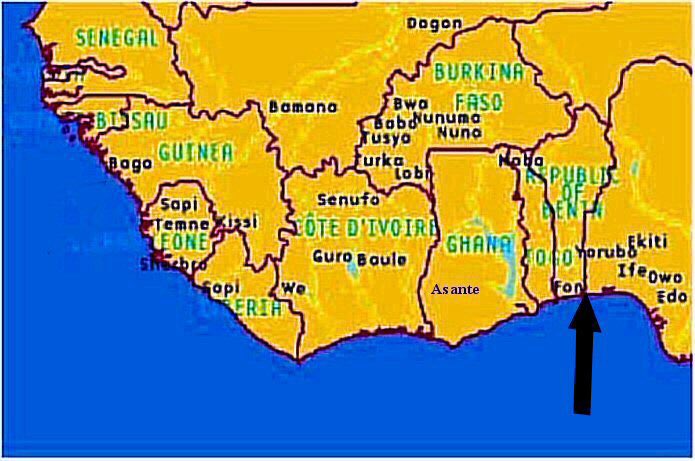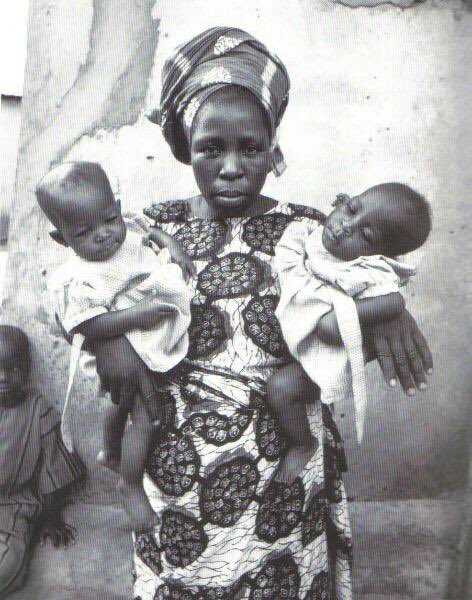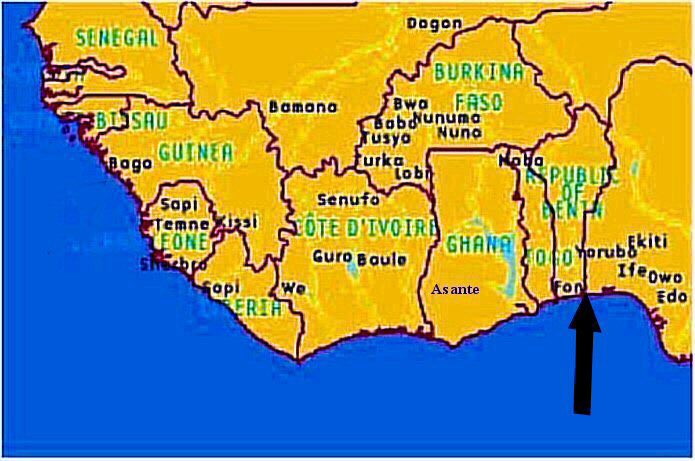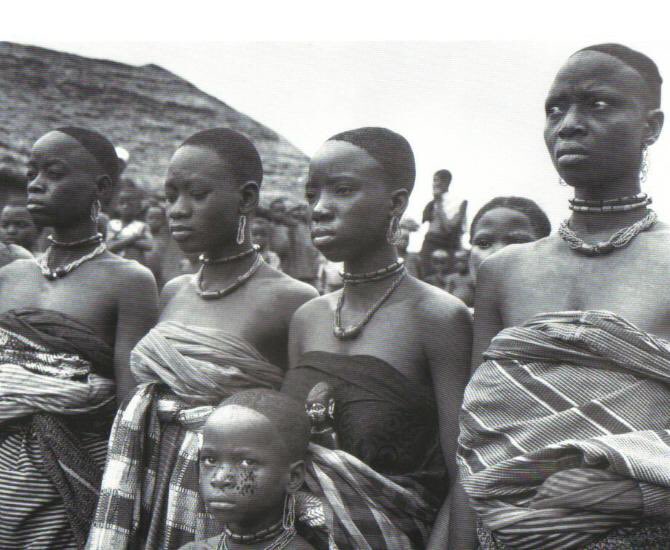
The AIONIAN Brotherhood of Schools and their founding principals.
This was an association of four of some of the oldest secondary schools in Yorubaland.
It was founded in 1929/30.
This was an association of four of some of the oldest secondary schools in Yorubaland.
It was founded in 1929/30.
AIONI was the combination of the first letters of the 4 schools
A - Abeokuta Grammar School
I - Ijebu ode Grammar School
ON - Ondo Boys High School
I - Ibadan Grammar School
The last 2 letters, AN were added to the name to make it adjectival.



A - Abeokuta Grammar School
I - Ijebu ode Grammar School
ON - Ondo Boys High School
I - Ibadan Grammar School
The last 2 letters, AN were added to the name to make it adjectival.




Member schools later became 12, but of course the name Aionian was still kept.
They cooperated academically & culturally, in sports & other extra curricular activities under the annual IONIAN Games, hosted in turns.
They had the same entrance examination & same school uniform.
They cooperated academically & culturally, in sports & other extra curricular activities under the annual IONIAN Games, hosted in turns.
They had the same entrance examination & same school uniform.
Later members and their dates of joining:
Oduduwa College, Ilé-Ifè, 1932.
Ilésà Grammar School, 1934.
Remo Secondary School, Ságâmù, 1934.
Ìmàdè College, Òwò, 1946.
Victory College, Ikare, 1947.
Oduduwa College, Ilé-Ifè, 1932.
Ilésà Grammar School, 1934.
Remo Secondary School, Ságâmù, 1934.
Ìmàdè College, Òwò, 1946.
Victory College, Ikare, 1947.
Egbado College, Ilaro, 1951.
Manuwa Memorial Grammar School, Iju - Odo, Okitipupa, 1954.
Gbòngán-Ode -Òmu Grammar School, 1955.
In the mid ‘70s when the Western Sate was divided into three; Oyo (incorporating present Osun state), Ogun and Ondo (incorporating present Ekiti)...
Manuwa Memorial Grammar School, Iju - Odo, Okitipupa, 1954.
Gbòngán-Ode -Òmu Grammar School, 1955.
In the mid ‘70s when the Western Sate was divided into three; Oyo (incorporating present Osun state), Ogun and Ondo (incorporating present Ekiti)...
...the twelve member schools fell conveniently into groups of four schools per state!
This gave the games an added, sort of inter state outlook.
But the glory of the games and the whole brotherhood was soon to begin to wane with the take over of schools by the military govt.
This gave the games an added, sort of inter state outlook.
But the glory of the games and the whole brotherhood was soon to begin to wane with the take over of schools by the military govt.
The idea of the association came about with the suggestion of Canon M.C. Adeyemi, at a meeting of the four principals at St Andrew’s College in Oyo in 1929.
The suggestion to form the association was adopted & a blue print was developed.
The AIONIAN BROTHERHOOD was thus formed.
The suggestion to form the association was adopted & a blue print was developed.
The AIONIAN BROTHERHOOD was thus formed.

Seated: The Rev. Alexander Babatunde Akinyele (Principal, Ibadan Grammar school - founded 1913)
Standing from left: Rev Israel Oludotun Ransome-Kuti (Principal, Ijebu Ode Grammar School - 1913).
Rev W.R.B. Kuye (Principal, Abeokuta Grammar School - 1908),...
Standing from left: Rev Israel Oludotun Ransome-Kuti (Principal, Ijebu Ode Grammar School - 1913).
Rev W.R.B. Kuye (Principal, Abeokuta Grammar School - 1908),...

...Cannon Moses Craig Adeyemi (Ondo Boys High School - 1919).
Below are short biographical sketches of each of the four visionary principals.
Below are short biographical sketches of each of the four visionary principals.
Rev. Akinyele, born in 1875 was the first Ibadan man to obtain a University Degree. He became Asst Bishop of Lagos in 1933, with his seat in Ondo.
He become 1st Bishop of Ibadan in 1952, at the same time his brother, I. B. Akinyele, also a pastor, but of the CAC, was Olubadan.

He become 1st Bishop of Ibadan in 1952, at the same time his brother, I. B. Akinyele, also a pastor, but of the CAC, was Olubadan.


Canon M. C. Adeyemi, born in 1882 was son of Seriki Lawani Adeyemi who’s father was Alaafin Alowolodu Adeyemi I, 1888-1905.
His mother was Ondo. He’s regarded as an Ondo man; his father, an Oyo prince was exiled from Oyo. He was the first Ondo man to obtain a University Degree.
His mother was Ondo. He’s regarded as an Ondo man; his father, an Oyo prince was exiled from Oyo. He was the first Ondo man to obtain a University Degree.

He became a Canon of the Cathedral Church of Lagos in 1935 and Vicar of St Stephen's Church, Oke-Aluko, Ondo in 1940. Legislative Council Member in 1942.
Rev. Israel Oludotun Ransome-Kuti was born in 1891. He took over the principalship of Ijebu Ode Grammar school from Bishop S.C. Phillips in 1918 and moved to Abeokuta Grammar School in 1932. He was the first President of Nigerian Union of Teachers (NUT). 



Rev W.R.B. Kuye was a Vicar of St. James' Church, Ogunpa, Ibadan (later Cathedral).
He was then transferred to St Peter's Church, Faji Lagos in the mid 1940s.
He was then transferred to St Peter's Church, Faji Lagos in the mid 1940s.

As noted earlier the name AIONIAN was formed from the initials of the founding schools and has no connection with the Greek Ionian school of philosophy, a pre-Socratic group of Greek philosophers of the 6th and 5th cent. BC, from the city of Ionia.
Also, AIONIAN is not to be confused with the adjective aeonian; from the word aeaon.
However the coincidental similarity with these two examples, must have struck the founders, being themselves men of letters.
However the coincidental similarity with these two examples, must have struck the founders, being themselves men of letters.
*This has drawn freely from the centenary brochure of Ibadan Grammar Schoo and a publication of the Ondo Boys High School Old Boys Association.
• • •
Missing some Tweet in this thread? You can try to
force a refresh
























